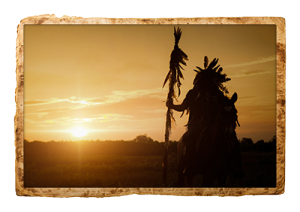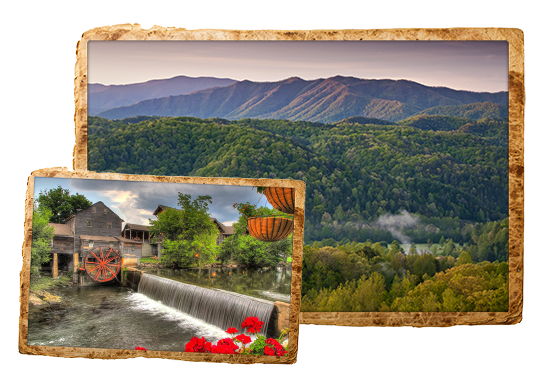History of Pigeon Forge, TN
Pigeon Forge was originally a hunting ground for the Cherokee in North Carolina. The Cherokee used a footpath known as the “Indian Gap Trail.” This allowed them to cross the Smoky Mountains from North Carolina to the Great Indian Warpath, now modern day Sevierville.
The Indian Gap Trail brought Europeans to Pigeon Forge. It was also used by hunters and trappers from North Carolina, as well as traders from Virginia.
In the 1740s, Colonel Samuel Wear became one of the first permanent Euro-American settlers in the area. He built a fort in Walden Creek and also the Little Pigeon River.

That area is now called Wear’s Valley. The fort, more of a stockade, allowed early pioneers a safe stopping point while passing through the Sevier County area. By 1820, the settlers built an iron forge where current Pigeon Forge still stands. Issac Love was the mind behind the iron forge and his son was the builder of the now historic Old Mill. Did you know, The Old Mill was used to create a loom which helped to make Union soldiers army outfits.
The Cherokee signed the Treaty of Dumplin Creek in 1785. This ceded the majority of Sevier County to the United States. Once this treaty was signed, Robert Shields built a small fort along Middle Creek. This area is now near Dollywood.
Tourism
The first “tourists” to the Pigeon Forge area came for the extended revivals held in the Middle Creek area. These revivals began in the early 19th century and could last for weeks at a time.
In 1810, the Revolutionary War brought Mordecai Lewis to the area after he obtained a 151 acre land grant along the Little Pigeon River. In 1817, Isaac Love, Lewis’s son-in-law, established an iron forge on the banks of the Little Pigeon River. The town of Pigeon Forge received its name from this forge and the mass amounts of passenger pigeons that flocked. In 1830, Love built the Pigeon Forge Mill. In 1841, Love’s son William built the post office and gave the town the name of Pigeon Forge. In the 1870’s, Henderson Springs was a health resort opened in Pigeon Forge. Residents of large urban areas would travel to take in the mountain springs. These springs were thought to have health restoring qualities.
The Great Smoky Mountains National Park
As of the 20th century, Pigeon Forge was fairly isolated. There were no major roads and the closest railroad station was in Sevierville. The big change that brought life to the small community arose with the announcement of the Great Smoky Mountains National Park in 1934. Additionally, in the 1950’s, improvements were made to US-441. This also led to the establishment of a few campgrounds and lodges. In 1961 the city officially incorporated.
In addition, the Rebel Railroad was opened shortly after the city was incorporated. Visitors got a chance to see what it was like to ride a Confederate steam train. In 1964, the brothers renamed the attraction to Goldrush Junction. The attraction was also given a Wild West theme.
This was similar to their theme park in North Carolina called Tweetsie Railroad. The brothers added a log flume ride to Goldrush Junction later on. The log flume became the most popular one at the park. In 1969,the park was sold to the Herschends from Branson, Missouri. The park was renamed to Silver Dollar City.
Pigeon Forge created a plan that focused on tourism in 1982, which included outlet malls, theme parks, and live music.
In 1985, famous Sevier County resident, Dolly Parton, joined the Herschends to become a partner in Silver Dollar City. The park name was changed to Dollywood.
The city of Pigeon Forge is now home to hundreds of attractions, lodging locations and more.


